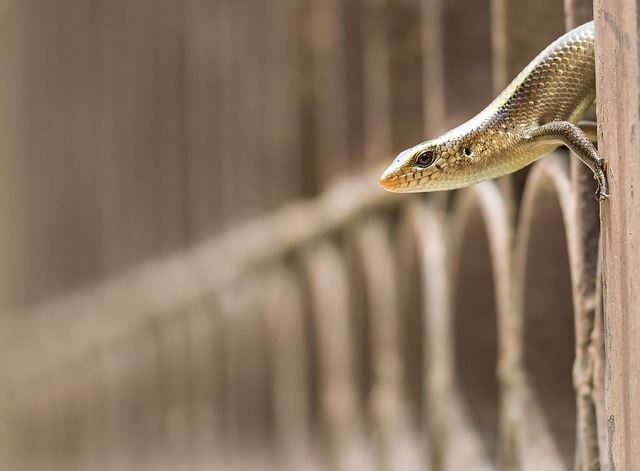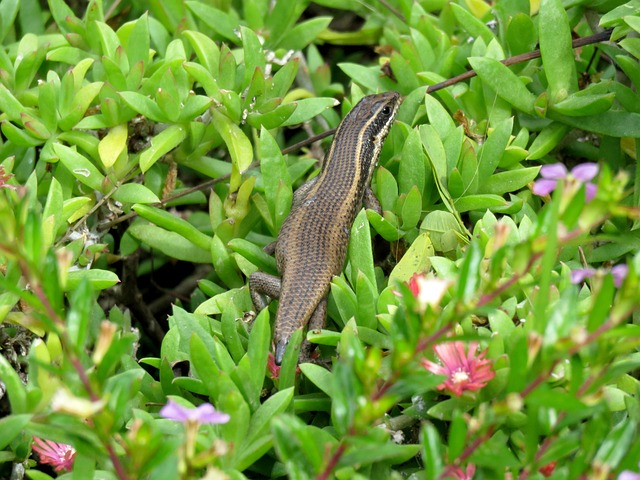Introduction to the Blue Tailed Skink
The blue-tailed skink, scientifically known as Plestiodon fasciatus, is a small but stunning lizard found in various parts of North America. These fascinating creatures belong to the family Scincidae, which includes over 1,500 species of skinks worldwide. What sets the blue-tailed skink apart is its striking appearance, with a vibrant blue tail that contrasts beautifully with its sleek, brown or reddish-brown body.
Physical Characteristics of the Blue Tailed Skink
Adult blue-tailed skinks typically measure between 5 to 8 inches in length, with the tail comprising approximately two-thirds of their total body length. Their slender, elongated bodies and short limbs are perfectly adapted for their agile, arboreal lifestyle. One of the most distinctive features of the blue-tailed skink is, of course, its vibrant blue tail, which can serve as a defense mechanism against predators. When threatened, the skink can detach its tail, which then continues to twitch and writhe, distracting the predator and allowing the skink to escape to safety.
Habitat and Distribution of the Blue Tailed Skink
Blue-tailed skinks are found across a wide range, spanning from the eastern United States, extending as far west as Texas and as far north as southern Canada. They thrive in a variety of habitats, including deciduous forests, woodlands, rocky outcrops, and even suburban areas. These adaptable reptiles prefer environments with ample ground cover, such as leaf litter, fallen logs, and rock crevices, which provide them with the necessary shelter and hiding places they need to survive.
Diet and Feeding Habits of the Blue Tailed Skink
As opportunistic omnivores, blue-tailed skinks have a diverse diet that includes a variety of small invertebrates, such as insects, spiders, and even small vertebrates like frogs and lizards. These agile hunters use their sharp senses and quick reflexes to locate and capture their prey, often ambushing them from their hiding spots. Interestingly, blue-tailed skinks are also known to supplement their diet with plant matter, such as berries and other small fruits, when available.
Reproduction and Lifecycle of the Blue Tailed Skink
The reproductive cycle of the blue-tailed skink is closely tied to the changing seasons. In the spring, these lizards emerge from their winter dormancy and begin the mating process. Females typically lay a clutch of 4 to 8 eggs, which they carefully conceal in moist, protected areas, such as under logs or in rock crevices. After an incubation period of approximately 6 to 8 weeks, the young skinks hatch, emerging as tiny replicas of their parents, complete with their signature blue tails. These juveniles then undergo a process of growth and maturation, eventually reaching adulthood and repeating the cycle.
Predators and Defense Mechanisms of the Blue Tailed Skink
As a small and vulnerable reptile, the blue-tailed skink faces a variety of predators, including snakes, birds of prey, and even larger lizards. To protect themselves, these skinks have evolved a range of impressive defense mechanisms. In addition to their ability to detach their tails, they can also use their sharp teeth and claws to defend themselves, and some species are even capable of releasing a foul-smelling secretion to deter potential threats.
Interesting Facts about the Blue Tailed Skink
One of the most fascinating aspects of the blue-tailed skink is its ability to regenerate its lost tail. If a predator manages to grab hold of the skink’s tail, the lizard can voluntarily detach it, allowing the tail to continue moving and distracting the predator while the skink makes its escape. Over time, the skink can then regrow a new tail, though it may not be as vibrant or as long as the original.
Another intriguing fact about these skinks is their remarkable adaptability. While they are primarily found in natural habitats, such as forests and rocky areas, they have also been known to thrive in suburban and even urban environments, taking advantage of the abundant food sources and suitable hiding places that these areas can provide.
Conservation Status and Threats to the Blue Tailed Skink
Despite their widespread distribution and relatively stable populations, the blue-tailed skink, like many other reptile species, faces a variety of threats to its long-term survival. Habitat loss and fragmentation due to human development, as well as the introduction of non-native predators, can all have a significant impact on these delicate creatures. Additionally, climate change and the increasing frequency of extreme weather events can also pose challenges for the blue-tailed skink, as they may disrupt the delicate balance of their natural ecosystems.
How to Observe and Photograph the Blue Tailed Skink in the Wild
For those of us who are eager to catch a glimpse of these remarkable reptiles in their natural habitat, there are a few tips to keep in mind. Blue-tailed skinks are generally quite shy and elusive, so patience and a keen eye are essential. Look for them basking on logs, rocks, or low-hanging branches, or carefully search through leaf litter and other ground cover. When observing these skinks, it’s important to maintain a respectful distance and avoid disturbing their natural behaviors.
If you’re a nature photographer, capturing the vibrant blue tail of the skink can be a true test of your skills. Approach slowly, use a telephoto lens to minimize disturbance, and be prepared to react quickly as these skinks are known for their lightning-fast movements. With a bit of luck and perseverance, you may be rewarded with stunning images that showcase the true beauty and elegance of the blue-tailed skink.
Conclusion: Appreciating the Beauty and Importance of the Blue Tailed Skink
As we’ve explored the fascinating world of the blue-tailed skink, it’s clear that these enigmatic reptiles deserve far more recognition and appreciation than they often receive. With their striking appearance, remarkable adaptations, and important roles within their ecosystems, the blue-tailed skink is a true testament to the wonders of the natural world.
As we conclude our journey, I encourage you to keep an eye out for these captivating creatures the next time you’re in a suitable habitat. Take the time to observe them, appreciate their beauty, and consider how you can support the conservation efforts that aim to protect these remarkable reptiles for generations to come. Together, we can ensure that the blue-tailed skink continues to thrive and inspire awe in all who are fortunate enough to encounter them.
